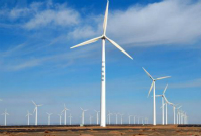

Chinese Vice Premier Wang Yang delivered a keynote speech at a China-U.S. business luncheon here Tuesday.
The following is the full text of the speech:
Win-Win Cooperation Is the Best Cooperation
Keynote Speech by H.E. Wang Yang
Vice Premier of the State Council of the People's Republic of China
At the China-U.S. Business Luncheon
Washington, D.C., 18 July 2017
Chairman Evan Greenberg,
President Thomas Donohue,
Chairman Xu Chen,
Secretary Steven Mnuchin,
Secretary Wilbur Ross,
Ladies and Gentlemen,
I want to thank the U.S.-China Business Council, the U.S. Chamber of Commerce and the China General Chamber of Commerce - USA for the warm invitation and the opportunity to meet friends, both old and new, in the business communities of the two countries. I had been to the States six times in the last five years. Every year I came, I would accept the invitation to meet and speak to the business leaders here. To be honest, it's not easy to always have something new to say. But Confucius said, "One can acquire new knowledge by constantly reviewing the past." Hopefully, I can put it into practice today in my speech.
I recall when I came to Washington last November, the dust had just settled for the presidential election in this country. The economic and trade policy of the new U.S. government for China was a topical issue in the business communities. I said at the welcoming luncheon then, although there would be a new president in the United States, the passions of the business communities remained unchanged for cooperation with China. If the large gathering at the luncheon was any guide, there was every confidence in the future of China-U.S. economic and trade relations. It seemed to be a pretty risky prediction of mine at the time, since many kept their fingers crossed, worrying that China-U.S. trade relations would enter a stormy season of winter and even run the risk of a trade war.
It was at that critical juncture that President Xi Jinping accepted the invitation with no hesitation to come to the United States, and had a historic meeting with President Donald Trump at Mar-a-Lago, which set a constructive tone for China-U.S. relations in a new era. The two sides decided to set up four high-level dialogue mechanisms, including the Comprehensive Economic Dialogue, and launched the 100-Day Plan for China-U.S. economic cooperation, which was most reassuring to the business communities in both countries. We are pleased to note that thanks to the painstaking efforts of both sides, the 100-Day Plan has delivered major outcomes. The American beef has found its way back to the Chinese market after 14 years. The policy barriers for U.S. LNG exports to China have started to crumble. In the first five months of this year, China had already imported 400,000 tons of LNG from the United States, standing in sharp contrast to zero in the same period of last year. More importantly, through 100 days of intensive engagement, our economic teams have built mutual trust, and managed to establish a way of communication featuring mutual respect and win-win cooperation.
You may ask, why is it possible? The answer is here. You are the ones who deserve the credit. I said here last year, China-U.S. business cooperation is market behavior. The underlying drivers lie in the people and the business communities. The U.S. side has made that choice indeed in reflection of the mainstream opinions of the business communities. Your long-standing support and active participation have helped to create an atmosphere in favor of cooperation rather than confrontation for China-U.S. business ties, and have contributed to the China-U.S. economic relationship as it stands today. Although there may still be twists and turns in our cooperation going forward, as long as you have confidence, the overall direction of China-U.S. business cooperation will not change.
This brings me to my first conclusion: cooperation is the only right choice for our two countries. The giant ship of China-U.S. economic and trade relations is sailing on the right course.
Ladies and Gentlemen,
China-U.S. cooperation is not something new. Without going back to the distant past, just by taking stock of our discussions at the Strategic and Economic Dialogue and JCCT since the 18th CPC National Congress in 2012, we will find that our cooperation has indeed been fruitful in many areas.
In previous dialogues, China had undertaken to adjust the economic structure, and change the growth model that was mainly driven by investment and export. The contribution of China's final consumption to economic growth, which was only 47 percent in 2013, jumped to 77 percent in the first quarter of this year. The proportion of services relative to the GDP increased from 46.7 percent in 2013 to 56.5 percent in the first quarter of this year. It is also worth noting that China's current account surplus relative to the GDP dropped from the peak of 10 percent in 2007 to 0.7 percent in the first quarter in 2017.
China had undertaken to allow broader market access and greater opening of the services sector. China has in recent years revised on its own initiative "the Catalogue for the Guidance of Foreign Investment Industries" several times, leaving only 63 industries under restriction, 117 fewer than those of the 2011 version, down by an impressive 65 percent. Two U.S. financial institutions have just gained licenses to conduct bond underwriting and settlement businesses in China's interbank bond market. This is a result of the greater opening of China's financial sector. In the 11 pilot free trade zones including the one in Shanghai, opening-up is broader in scope and greater in depth. As a matter of fact, China has already agreed in the Sino-U.S. BIT negotiations to further open up its banking, securities, insurance, telecommunications, cultural, the Internet and automobile sectors.
China had undertaken to step up efforts to conserve energy and cut emissions in a joint endeavor to tackle global climate change. Between 2012 and 2016, China had cut its CO2 emissions per unit of the GDP by 22.5 percent. Last year, China's installed capacity of renewables already accounted for 24 percent of the world's total and 42 percent of the world's newly installed capacity came from China.
China had also undertaken to strengthen the protection of intellectual property rights. Since 2013, the Chinese government has carried out over 170 special campaigns against unlawful trademark counterfeiting and copyright piracy, investigated more than 1.3 million cases of criminal offenses, and nearly 100,000 people have been penalized. The Intellectual Property Courts set up in Beijing, Shanghai and Guangzhou in 2014 have tried almost 40,000 cases.
It should be emphasized that China has made a choice of its own accord by fulfilling these pledges for its own development and progress. And it meets the interests of the 1.3 billion Chinese people and responds to the call of the U.S. side. Of course, the path of cooperation should always be open to two-way traffic delivering benefits to both countries. We hope the U.S. side could also address the concerns of the Chinese side to bring about a win-win outcome.
One needs to bear in mind that China remains a developing country and it has only been a little bit over 20 years since China adopted the market economy system. Opening up a market and starting up a business might not have been as easy as some had expected in the business communities. I understand that you still have concerns over quite a few issues. That will keep us motivated and help us find our way forward. As a matter of fact, we are reflecting on our own inadequacies and we will redress them with a problem-oriented approach. When it comes to China's reform and opening-up endeavor, our goals are well-defined, our path is clearly marked, and our steps are surely and steadily taken. Sometimes we may not seem to be walking fast enough; day in and day out, we will beat expectations and come a long way. To give an analogy, when you look at a growing kid everyday, you could hardly notice any growth in him. But given a few years, you would be taken aback by how much he has grown. Isn't it the case for China with its reform and opening-up in the past nearly four decades?
This brings me to my second conclusion: China's development and progress is a long-term certainty, which offers the most important external environment for foreign businesses to work with China.
Ladies and Gentlemen,
After nearly 40 years of rapid growth, China's economy is bigger in size but not sturdy enough. China is still at the lower ends of the global industrial chain, lagging far behind the United States. The Chinese and U.S. economies do have a competitive dimension, but there is far greater complementarity than competition. The two countries have seen the space for cooperation expanded rather than narrowed.
The Chinese economy will continue to grow at a medium-high speed and climb higher on the value chain. As China's traditional industries are transformed and upgraded at a faster pace and emerging industries flourish, there is huge market potential to tap for U.S. exports of advanced technologies, key equipment and critical parts to China. Unfortunately, American businesses have not had their fair share of the "cake" due to outdated U.S. regulations on export control. In 2001, U.S. high-tech export to China accounted for 16.7 percent of China's total import of such products, while last year the percentage dropped to 8.2 percent. For instance, China's import of integrated circuits (IC) amounted to a whopping 227 billion U.S. dollars last year, more than the import of crude oil, iron ore and primary plastics combined. But only 4 percent of China's IC import came from the United States. According to an Op-Ed by the Carnegie Endowment for International Peace last April, if the United States were to liberalize its export barriers against China to the same level as those applicable to Brazil or France, the U.S. trade deficit with China would narrow by up to 24 percent and 34 percent respectively.
China now has 300 million people in the middle-income group. The pattern of residential consumption is shifting from basic livelihood to greater emphasis on quality, and from offline to online. Their demand for quality U.S. goods and services is also swelling by the day. Last year, Chinese tourists made about 3 million visits to the United States with a per capita spending of over 11,000 U.S. dollars, which helped to create 150,000 local jobs. China's online-shoppers number over 460 million. Popular American products such as cherries, lobsters, sea crabs, nuts and health supplements can reach Chinese households within 72 hours. American export to China via e-commerce surged by more than 100 percent last year. The "Gateway '17" conference held by Alibaba Group in Detroit last month attracted over 3,000 American SMEs, as they are eager to get a fast ride of the Internet to tap into China's vast consumer market.
The U.S.-China Business Council predicts that American export of goods and services to China will double to 369 billion U.S. dollars in the next decade, and rise to 520 billion U.S. dollars by 2050. I'm sure any business with vision would value such a huge market and any government with an ambition would value cooperation with China.
This brings me to my third conclusion: there is no limit to the growth of the Chinese market, and China-U.S. business cooperation holds out a promising future.
Ladies and Gentlemen,
Business cooperation is about the give and take of interests, and it's only natural that differences may arise from time to time. There are people both in the Chinese and American business communities who want their own government to dismantle the "barriers" of the other side that block market access, and at the same time build "walls" to keep foreign goods out. We understand that quite a few Americans support "Buy American, Hire American," just as in China there is also voice for "Buy Chinese, Hire Chinese." But it is important that both sides come to realize with cool heads that given the depth of our business cooperation, neither Chinese nor Americans can do without goods from the other country. We both have a stake in the robust, balanced and healthy development of our business ties.
The first China-U.S. Comprehensive Economic Dialogue is slated to open tomorrow. China stands ready to work in concert with the United States to find a solution that benefits both sides and reach the best deal. Both of my dialogue partners were once business leaders well versed in the art of deal-making. Getting down to the nuts and bolts of our dialogue may be painstaking. Hopefully, the outcome will be gratifying.
 Picturesque summer scenery of Tuohulasu Prairie in Xinjiang
Picturesque summer scenery of Tuohulasu Prairie in Xinjiang Colors of summer: Yanhu lake transforms into muti-colored pools
Colors of summer: Yanhu lake transforms into muti-colored pools China’s high-speed railway now offers food at the click of a button
China’s high-speed railway now offers food at the click of a button New uniform coming to PLA
New uniform coming to PLA Gambler or dreamer?
Gambler or dreamer? China is world’s largest renewable energy producer, consumer
China is world’s largest renewable energy producer, consumer Chinese base in Djibouti not military expansion
Chinese base in Djibouti not military expansion Legislation needed to protect China’s dark sky resources
Legislation needed to protect China’s dark sky resources China’s domestic airlines' carrying capacity beats the US
China’s domestic airlines' carrying capacity beats the US Top 10 most sustainable cities in China
Top 10 most sustainable cities in China Top 10 European patent applicants in 2016
Top 10 European patent applicants in 2016 The power of 'She' in China
The power of 'She' in China Seven most beautiful art museums in China
Seven most beautiful art museums in China Overseas forces must stop politicizing Liu Xiaobo's wife
Overseas forces must stop politicizing Liu Xiaobo's wife Seeing singletons as a potential problem, Communist Youth League demonstrates matchmaking prowess
Seeing singletons as a potential problem, Communist Youth League demonstrates matchmaking prowess  India follows China’s path to factory power
India follows China’s path to factory power  Male doctoral students become leftovers in China’s marriage market
Male doctoral students become leftovers in China’s marriage market Day|Week